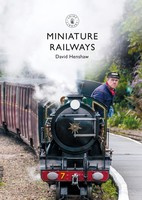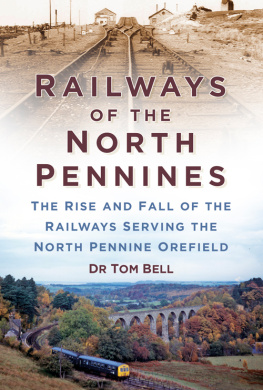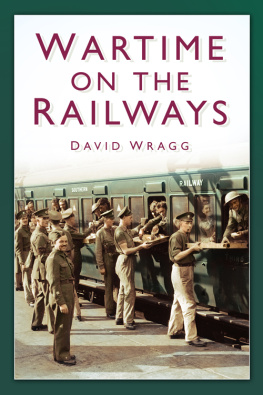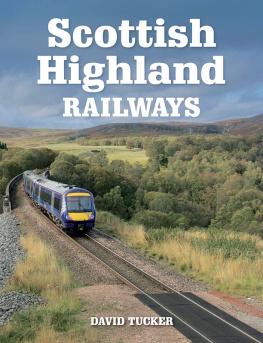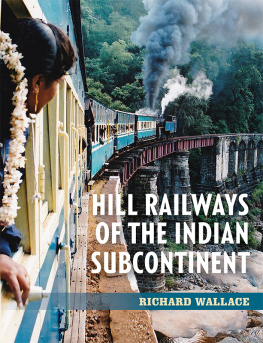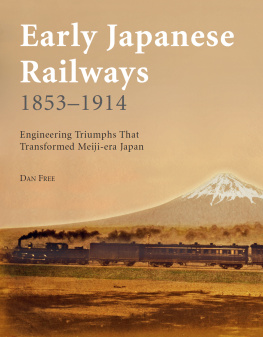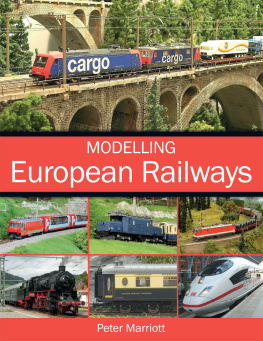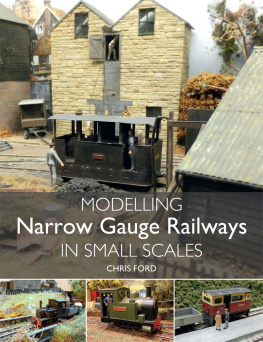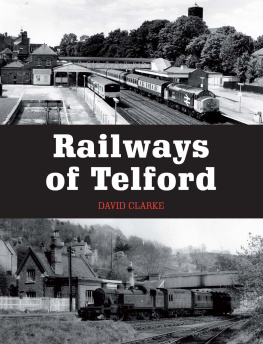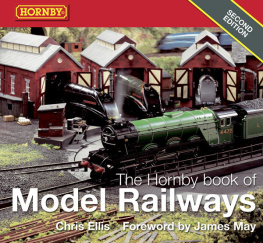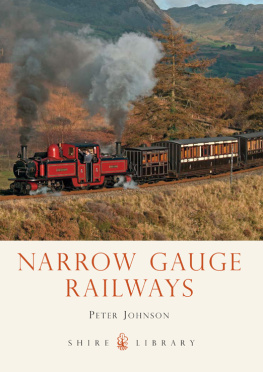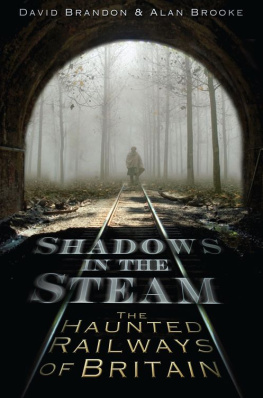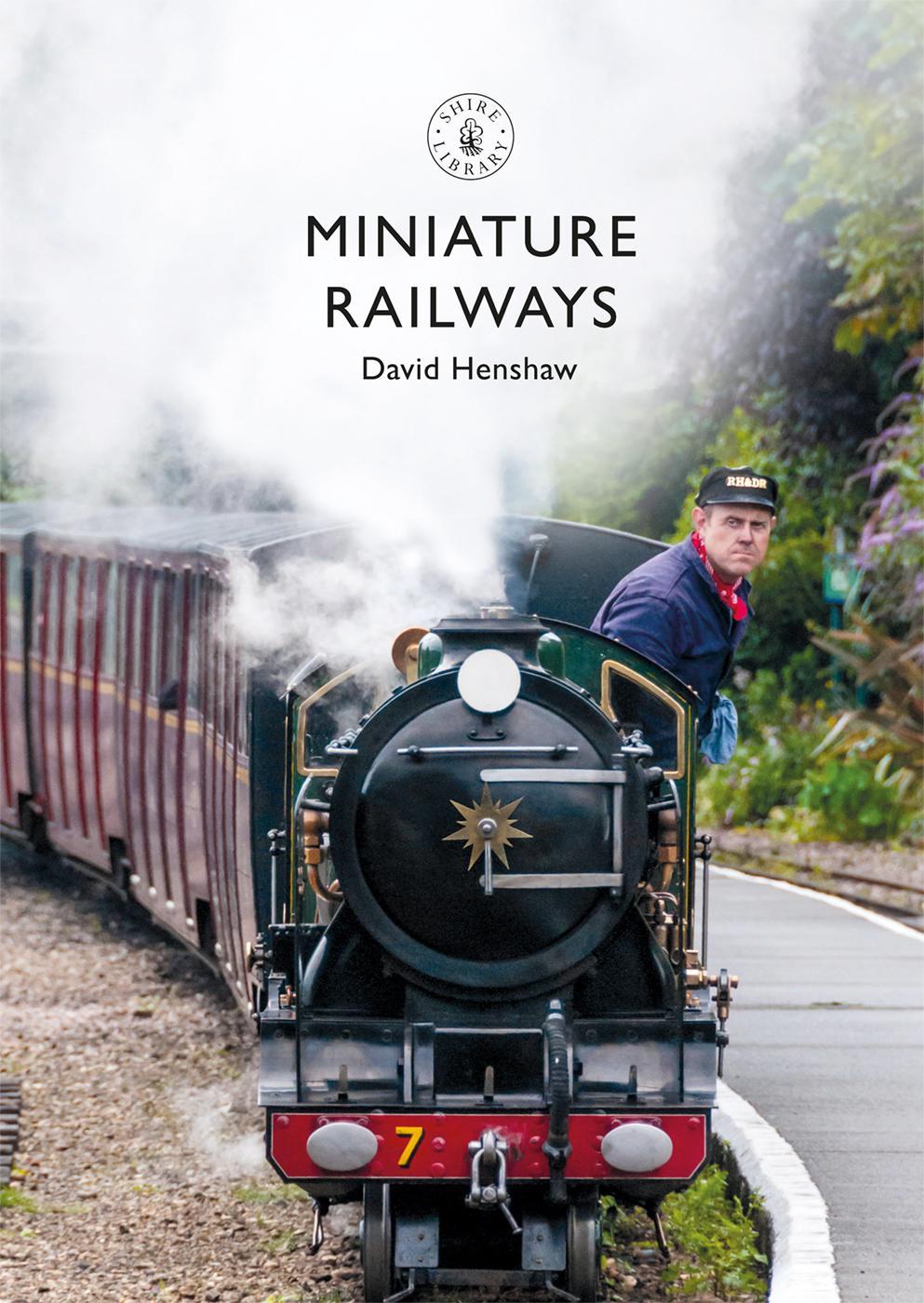
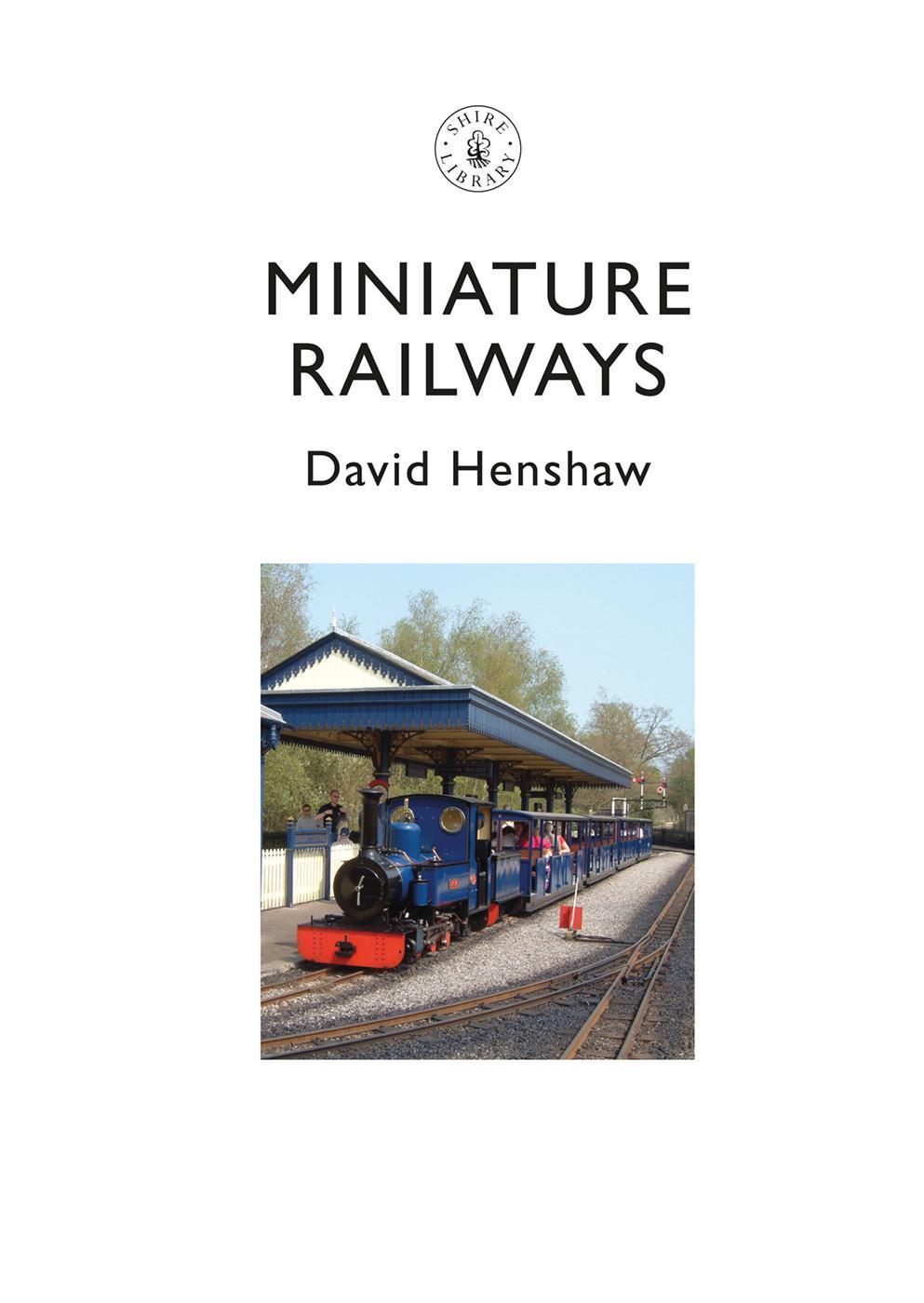
INTRODUCTION
T HE RAILWAY LITERATURE usually suggests that miniature railways became established in the late Victorian era, but recent research suggests their origins go back a great deal further indeed, almost as far back as railways themselves. There are few surviving records of early miniature railways and locomotives, but tantalising paragraphs pop up in newspaper reports from the 1840s and 1950s, some fragments of written history have survived, and there are a handful of locomotives.
The thinking behind the very first miniature locomotives is not really known. At the time of writing, the earliest locomotive is thought to have been built by one Charles Albert Leatham around 1840, although why it was made is unclear. Albert was a young man hoping to establish his credentials as a railway engineer, so perhaps we should think of it as a demonstration piece, at a time when recognised engineering qualifications were in their infancy.
This may also apply to the machine built by Robert Pearson Brereton at about the same time. Brereton joined I.K. Brunels staff in 1836 at the age of 18. As the model is of a well-established locomotive, its not inconceivable he measured one up and built a model to demonstrate his capabilities, but for various reasons, its more likely to have been made later. Building it certainly did Brereton no harm, because by the age of 29 he had become Brunels chief assistant and is credited with supervising the construction of the Royal Albert Bridge at Saltash, com pleted in 1859.
A report in the Hampshire Chronicle of 27 March 1843 relates to a miniature railway constructed for Captain Robert Rodney at Alresford in Hampshire. Judging by the purely decorative tunnel, this 400-yard circuit seems to have been built solely for the entertainment of the Captain, his family and guests. Not unusual today, but this was just three years after the completion of the formative London & Southampton Railway, which passed some 8 miles away, and 22 years before the grown up railway reached Alresford! The line seems to have survived for several decades and ended up dual-gauge, with two locomotives and ten items of rolling stock. The Alresford line and other early miniature railways and locomotives were around 12-inch gauge a bit big by modern standards, but presumably chosen with a shrug as a suitabl e round figure.
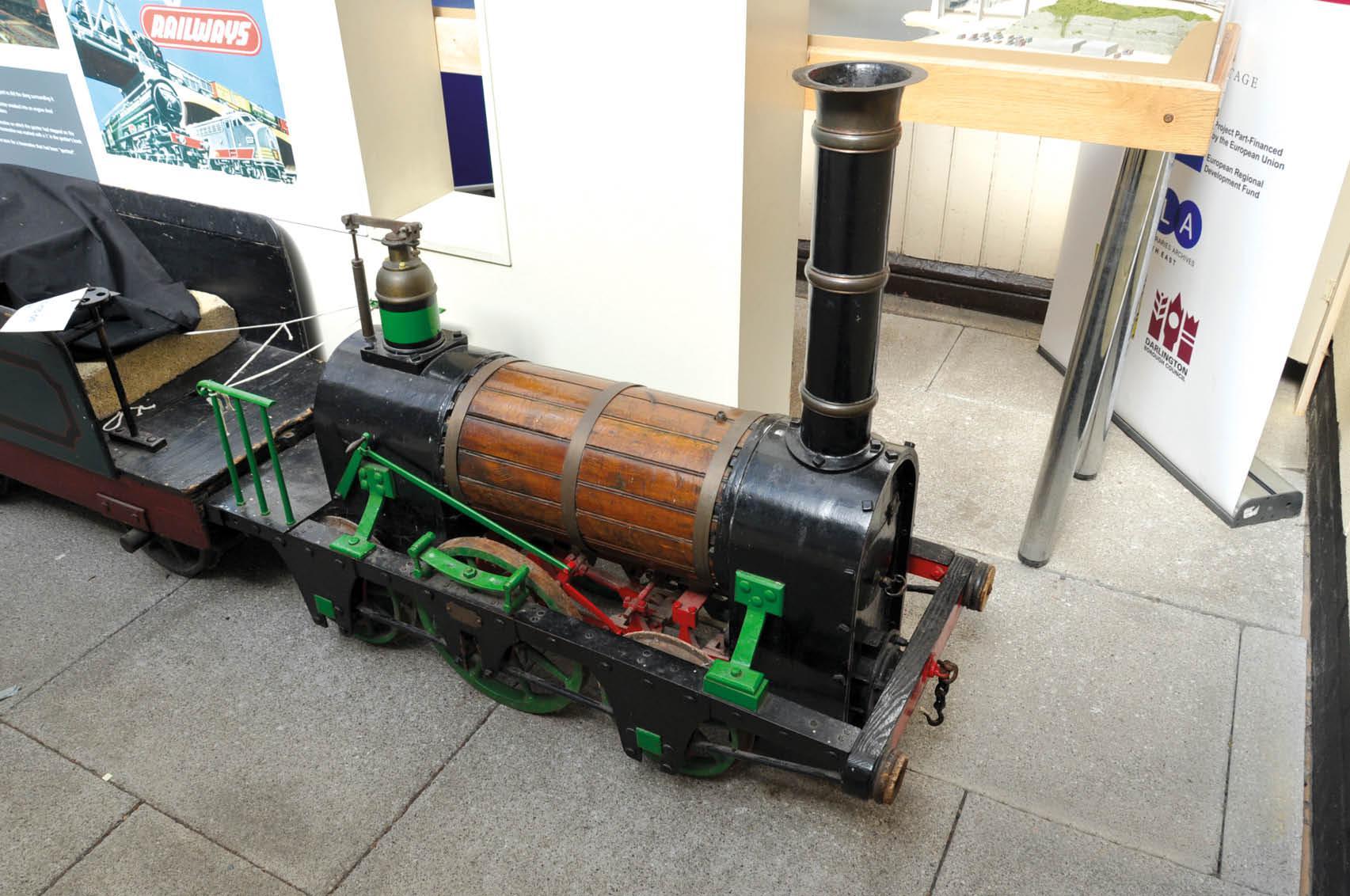
Albert Leathams model of the Stephenson patent locomotive may have been a demonstrator for prospective employers. It probably dates from the early 1840s.
Such historical fragments tell us very little, and there may have been dozens of others, but we need to skip almost a generation to find more detail. Much better documented are the 15-inch gauge estate railways promoted by Sir Arthur Heywood from the 1870s as the minimum gauge railway, which of course it wasnt then or now, but Sir Arthur was thinking in terms of working estate railways. He could never have guessed that his minimum gauge would become the recognised standard for the largest miniature pleasure lines, of which two appea r in this book.
Evolution of narrower gauges, suited to large gardens rather than country estates, seems to have been a bit hit and miss. Pleasure lines were certainly constructed on the Ardkinglas Estate on Loch Fyne, at Far Sawley in Cumbria, and at Chippenham in Wiltshire. Most of these railways seem to have been quite substantial affairs, except for the Chippenham line, which appears to have been 15-inch gauge.
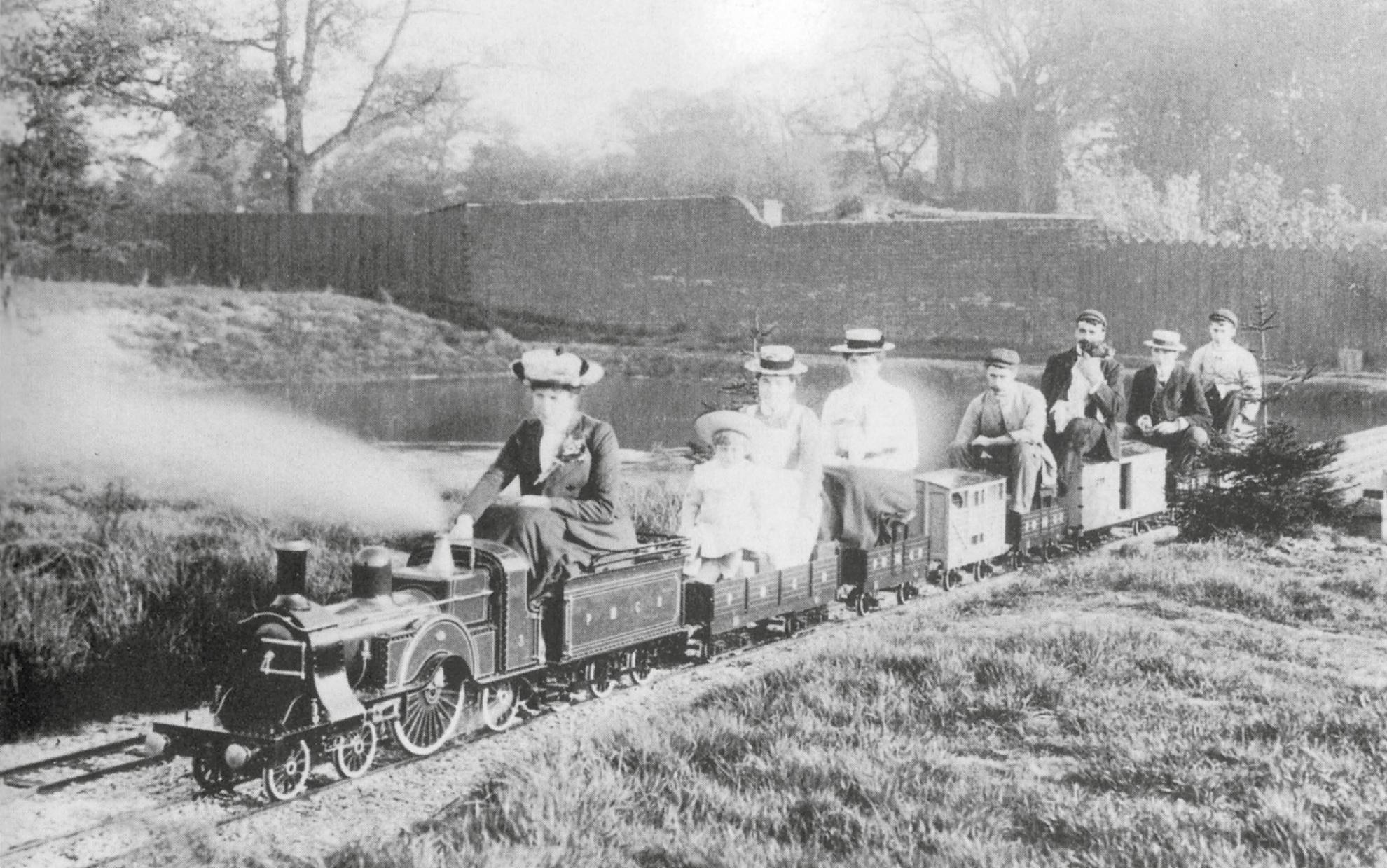
Sir John Holders line at Pitmaston, Birmingham was probably the first 10-inch railway, the gauge being chosen to suit this 4-2-2 locomotive.
The first reliably recorded railway of 10-inch gauge was built by Sir John C. Holder in the grounds of Pitmaston, his mansion in Moor Green, Birmingham in the late 1890s. Some earlier model locomotives had been built at 9-inch gauge, because this equated more or less to a scale of 2 inches to the foot, or 1:6, but Sir Johns line had that extra inches and was all the better for it.
There is some debate about how and why this unique 10-inch line came about. The strongest theory is that it was constructed around a broad gauge locomotive acquired by the Holders, and (probably) built to the scale of 1 inches to the foot, or 1:8. Another theory suggests that the builder of this loco had made a common mistake, and set the wheel back to back to 9 inches, giving a gauge of 10 inches, and the Holders scaled everything up to suit. If that really was the case, it wasnt the last time such a mistake would be made, and it certainly wasnt the last time a whole railway (and later derivatives) would be based around a unique locomotive. This seems unlikely though, especially as the handsome 4-2-2 was always known as the broad gauge model. In any event, the Pitmaston Moor Green Railway is regarded as the father of garden lines, and it established scales and practices that have endured into the twenty -first century.
The 10-inch might have faded away if Sir Johns engineer, John William Grimshaw, hadnt later built his own 10-inch line and locomotives at Broome near Stourbridge, adding the stock from Pitmaston when that line closed. In 1903, Henry Greenly the engineer who would go on to design some of the finest miniature locomotives settled on 10-inch gauge, and that was that. The 10-inch miniature railway had arrived as public entertainment.
Origins of the 7-inch gauge are more tangled. It has become the predominant gauge for new miniature lines today, so its generally considered a 1970s innovation, but its origins go back much further. As with 9-inch, it was very nearly an exact scale of the 4-foot 8-inch standard gauge, but not quite, because a true match for a scale of 1 inches to the foot (1:8 scale) would be closer to 7-inch gauge. In 1899 the Society of Model Engineers proposed a range of precise scale-model gauges (at that stage no one really expected to haul passenger trains with such tiny locomotives) of 3 inches (1:15), 4 inches (1:12) and 7 inches (1:8). A subcommittee was appointed, but anarchy continued to prevail and in the end the model gauges all ended up slightly different. The failure of 7-inch gauge seems to have been partly down to Henry Greenly who was arguing for 7-inch gauge. Its not clear why, but knowing Greenly, the reasoning is more likely to have been about stability or squeezing in a generous firebox than some issue of scale or aesthetics.
In 1908, the model firm of Bassett-Lowke built a 7-inch gauge locomotive to the order of a Mr Coates of Paisley, and this was designed by Greenly and proudly displayed in the Bassett-Lowke catalogue with a range of other equipment and rolling stock, thus inadvertently promoting the gauge as a standard, which it really wasnt, although it soon would be.
The 7-inch was given a significant boost by one Louis Shaw of Ilkeston, Derbyshire, who built a number of locomotives from 1910, and ran them on the first commercial 7-inch miniature railway from 1915, at Little Hallam Reservoir, a local beauty spot. Developments seem to have centred around the East Midlands and South Yorkshire, with a possible garden line in the area from 1906, and the well-documented Saltwood Railway, established in Sheffield from around 1910, later moving with its owner to Saltwood in Kent, where for most of the twentieth century it claimed the title of oldest existing miniature railway. Others would follow, but the gauge wasnt widely adopted until the early 1970s, when it became popular as a cheap mass-market garden format, later achieving similar success in the commercial world, thanks to bigger, more powerful locomotives, and lower, more stable rolling stock.
Next page
